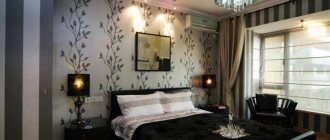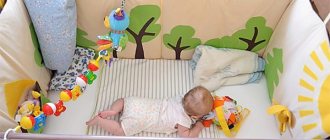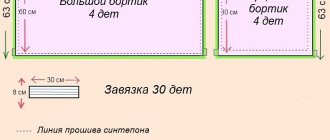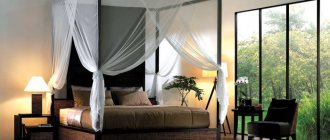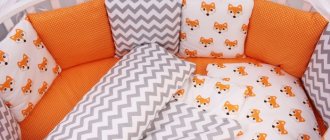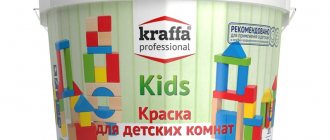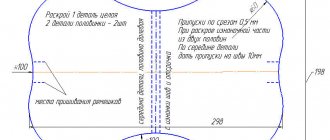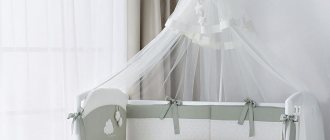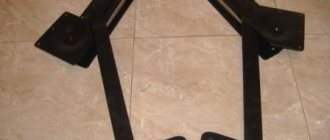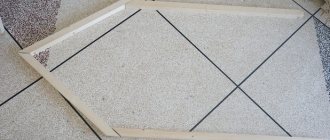You can buy bumpers for your baby's crib at any children's store. This accessory became popular back in the Soviet years and has not lost its relevance to this day. At the same time, making bumpers for a baby crib with your own hands is not so difficult. The main thing is the desire of the parents themselves to decorate the space of the cradle. The stores have enough materials for sewing and decorating such products.
The article shows how to sew bumpers for a child, what models you can choose and how to decorate. The accessory is not only attractive, but also practical. It prevents the baby from getting injured and adds comfort to the interior.
DIY bumpers for a baby crib
Side functions
The frame of children's beds made of metal and wood is quite rigid. The side parts often consist of beams. Light enters through the holes in the crib. A small hand or foot of a newborn can get there, which also adds to the concern of young parents. The solution in both cases is to protect the sides of the cradle. A special bumper with filler acts as a limiter and becomes a buffer between the baby’s cozy world and the outside environment.
An additional function of the sides is educational. You can place interesting pictures on them, add educational motifs to decorative elements, and equip baby accessories with squeakers, rustling sounds, moving and musical parts.
Star pillow attracts baby's attention
When choosing a crib, it is recommended to take into account several factors: the practicality and safety of the material and design, the appearance and functionality of the product. Modern manufacturers offer a wide range of models to suit every taste and budget. The round crib has become especially popular lately.
Product care
It is not recommended to sew the sides, as the product requires constant care at frequent intervals. What you need to do to keep the product clean:
- Washing is done at least once every 7 days. Only covers can be wet cleaned, and the base with the filler is well ventilated and dust is knocked out.
- After complete drying, double-sided ironing is carried out at high temperatures.
- In addition to washing, the product must be ventilated once a week.
Important! For washing, use only baby powders and fabric softeners. When choosing detergents, washing and ironing modes, you need to take into account recommendations related to the care of the type of fabric
The material may lose color, the texture may deteriorate, and defects may appear.
When choosing detergents, washing and ironing modes, you need to take into account recommendations related to the care of the type of fabric. The material may lose color, the texture may deteriorate, and defects may appear.
Child's age and bumper type
Ideas for arranging the internal contents of a crib are determined based on the needs of the child.
Protection in the form of sides can be full or partial. The first covers all sides of the crib, the second protects the child on the right and left. The age of the baby in this case is the main indicator affecting the density of the structure.
Pillows for sides, which can later be used in the nursery
Solid sides are ideal for active babies who explore the world and are able to move around the perimeter of the bed, but are not suitable for a newborn who wants to explore what is happening around them.
How to care
Since the protective sides are in constant contact with the little one, they require special delicate care. They can be washed at least once a week.
Washing should be done using special hypoallergenic substances. Children's washing powder is suitable for this, but its components must be free of fragrances and dyes. You can wash it in a machine, but only with the delicate cycle turned on. However, do not forget that this option is not suitable for padding polyester - the filler may become crumpled. With it, it is better to wash the pads by hand, this will avoid unnecessary problems.
Don't forget about ironing - hot steam kills all remaining germs and gives the pads a neat and aesthetic appearance.
Which models are suitable for home sewing?
There are removable sides for the crib, which are mounted in the form of a dense rectangular piece on the side. The work requires reliable material, which is not always easy to find. In addition, it is worth taking care of fixation - this may require complex structural elements or rare fittings
In general, vertical removable parts for sidewalls are more convenient, but they are not so easy to make at home.
Sides for a newborn's crib
Non-removable sides are ideal for sewing yourself. They are either placed in the crib as an insert, or tied to it with ribbons, fastened with buttons, etc. Sewing a non-removable buffer is easier, since it is based on a filler and a cover. Such models are universal and do not require special materials, complex tools or skills. They can be decorated to your taste. A huge selection of fabrics and decorative elements, the ability to use several types of covers for the interior - all this gives room for imagination and creates a unique, inimitable atmosphere in the nursery.
Sewing bumpers for a baby crib is usually not difficult. They do not require intricate cutting. The parts are cut out according to the standard, or based on the dimensions of the crib, if its dimensions are far from those presented in the store.
Types of fixed sides
Protective soft fencing can be classified into several categories. The choice is strictly individual. At the same time, there are many types of fences with filler.
According to the degree of density, crib restraints are:
1. Solid - such bumpers are presented in the form of fabric stretched around the entire perimeter, or in the form of similar parts with a soft filler.
Solid side for crib
2. Composite - a bumper in this category consists of interconnected parts (they can also be of varying degrees of softness), the advantage of which is their multifunctionality (pillows, for example, can be used not only as part of the bumper, but also for their intended purpose).
Depending on the presence of additional elements, there are simple crib guards and decorated ones. For a small child, it is advisable to think through the decorative component so that the side serves not only as an element of safety, but also develops the baby’s visual reactions.
The limiter may have a bottom. It can also consist solely of sidewalls. It is advisable to make the choice of one design or another based on the temperature conditions in the room. If the apartment or house is quite cold, a dense base filled with insulation will be a good choice. The side parts of the side will be attached to it.
Soft side without bottom
The bumper, which is sewn to a dense base, allows less air flow for the child, but in the warm season and hot heating season this can negatively affect his well-being. In addition, a fence that is too dense can interfere with the child's ability to explore the world, completely obstructing his view.
Before cutting, it is necessary to take into account the configuration of the bumper that is supposed to be used:
3. Pillow sides - can be with or without removable covers; The main requirement for pillows is the absence of small parts in fasteners and other elements that the baby can accidentally pull into his mouth and swallow.
Pillow sides can be found both in standard beds and in extension beds. In the latter case, cutting and sewing are carried out with less material consumption.
Traditional design in the form of pillows
4. High soft barriers - the design blocks the view, despite the good protection of the baby from impacts and falls.
High bonbon sides
5. Low-height sides are the complete opposite of the previous option; they require a more attentive attitude to the safety of the child.
An alternative to the previous option is a low side
6. Bumper with pockets - the internal filling will always attract attention, so this configuration will educate and develop the little inhabitant of the crib, but at the same time it can overstimulate.
7. Fences in the form of rollers - this option can be used as an alternative to pillows.
Side bed rails in the form of pillows
Master class on how to sew bedding for a crib
You will need
To sew children's bedding we need:
- natural material (preferably cotton, satin or flannel);
- tape measure;
- several pins;
- sharp scissors;
- meter ruler;
- a piece of dry soap or chalk;
- threads in the color of the fabric;
- iron;
- sewing machine.
Determining the size of the set for newborns
The best option so as not to miss the size of the future bedding set is to try on an old sheet, pillowcase and duvet cover.
If this is not possible, then we measure the child’s mattress and write down the length and width. We do the same with the pillow and duvet cover.
Before starting sewing, we first wash the purchased material to check its shrinkage and clean it from dust and dirt, and then iron it well with an iron using steam mode.
You can roughly “throw in” in advance how many centimeters the material will shrink by measuring a piece of fabric 10 cm larger. Or you can first decatenate the material on a small piece of fabric measuring 20–30 cm: wash it, iron it and measure it. This way you can mathematically calculate how much the piece of fabric chosen for sewing will sit.
Choosing material
We use satin to sew the baby's set. This is a natural material with a noble natural shine and pleasant texture. Due to the high density and special weaving of the fabric threads, its service life will be long. Such linen will not tear or wear out for a long time.
You can take a piece of calico for sewing. Such material will be rougher, but also quite wear-resistant. But you shouldn’t use chintz for sewing bed linen. It has a low density and will wear out quickly. In addition, it becomes deformed after washing.
To sew linen for a baby's bed measuring 120 by 60 cm, it is recommended to purchase a cut of 300 by 150 cm.
Making cuttings
We begin to cut out a sheet, duvet cover and pillowcase with a flap from the material. To do this, mark the following parameters on a piece of material:
- Sheet. Size: 100 by 150 cm
- Duvet cover. Size: 200 cm by 100 cm
- Pillowcase. Size 45 by 120 cm.
To save as much as possible on material, it is better to use the attached cutting diagram. This will make it easier to apply dimensions. We outline the contours using chalk and a ruler, and cut out the blanks with scissors.
Sewing sheets for a crib
After the blank for the sheet is cut out, we move on to sewing. First of all, the edges of the product are processed so that the threads do not fray. Only side cuts where there is no factory edge are processed. When cut correctly, the top and bottom of the sheet will produce factory edges, and the remaining sides should be hemmed.
Bend the ends 0.5 cm and repeat the same operation again. We'll get a double hem around the edges. It is pinned with needles or “gimmicked” with threads. We sew the resulting hem on a sewing machine, first one edge, and then “pass” the second.
Sewing pillowcases for a crib
- We take a cut piece of fabric onto a pillowcase, fold in the raw edges (like on a sheet) and stitch it on a sewing machine. At the corners, a fold is immediately made on both sides; these places are stitched with one line.
- After this, the material is folded along the fold so that the “face” of the material is inside. The valve is bent so that its tip lies on the other side. We make a regular stitch with a machine, then turn the pillowcase right side out.
- Our pillowcase is ready. All that remains is to iron it using steam.
Sewing a duvet cover
- We take the pattern that we prepared for the duvet cover. We make a double hem, “zhiulim” or fasten the raw edges with needles and stitch them on a sewing machine. We do this using the same system as with the sheet. But here it is recommended to process the edges so that the finished duvet cover looks better.
- We fold the hemmed duvet cover in half along the lines outlined in the cutting. We do this so that the front side “looks” inward. At the end we will get a rectangle with sides 100 by 95 cm. We sew the side of the duvet cover and its upper part.
- The lower part of the product is divided into three parts: two 40 cm each, one 20 cm. Take one side of the product and stitch it to the bottom. We leave twenty centimeters on one side. We don't flash them. This will be the hole into which we will later insert our blanket. We “pass” the remaining forty centimeters using a typewriter. At the end of each line, tacks are made.
- We turn our duvet cover inside out and iron it thoroughly. The duvet cover for the crib is ready.
We wash the resulting set, iron it and put it in the crib.
It is recommended to supplement bedding for a small child with soft bumpers.
Bumper fillers
If you have decided to use soft parts in the design of the guard, you should think about the inside and choose one of the following types of natural or artificial fillers:
Table 1. How to fill the crib restraints
| Natural ingredients | Artificial materials |
|
|
Features of fillers
An interesting idea is to use not only soft fabrics, but also dry herbs as filling.
Table 2. Impact of aromas on a child
| Herbs | Impact on well-being |
| Lavender | Normalizes the functioning of the nervous system, gives peace, improves sleep, eliminates excessive emotionality and tearfulness |
| Fennel | Eliminates anxiety, relieves abdominal cramps |
| Bergamot | Treats anxiety, helps fight viruses, is good for skin with rashes |
| Hop | Calms, improves sleep |
| Rose | Stabilizes the nervous system, improves immune function |
| Chamomile | Relieves pain, spasms, antiviral |
You can use the above herbs in their pure form and in various proportions. As a result, the child will sleep better, be capricious and get sick less.
Herbs in a case - pleasant aroma and benefits for the body
Useful tips
Almost every expectant mother can sew borders made of cotton fabric and padding polyester into a baby crib thanks to the step-by-step instructions suggested above. Below are tips from experts on making your own crib bumpers:
- When choosing the fabric and design of the future product, it is worth using your imagination, because experiments with the color and shape of the sides have a positive effect on the development of the baby.
- Fastenings such as Velcro and ties often do not withstand the pressure of the baby, who pulls on the side, trying to get up in the crib. Therefore, it is advisable to sew overlays from a single piece of fabric. The edges that have not been finished can be folded. This way they will be in the middle. After this, one seam is sewn along at least part of the ties.
- You can use ordinary rectangles as patterns.
- Holofiber is one of the best fillers for sides, which does not lose its shape even with frequent washing.
Materials for the outer part of the bumper
To ensure that the covers are well ventilated, they can be made of linen or thick calico.
The main requirement is that the threads of the woven material must be tightly intertwined, securely connecting to each other and creating a barely noticeable relief. A fabric that is too smooth will be uncomfortable for the child.
In general, it should be said that choosing fabric for children's clothes is a responsible matter. Any specially processed cotton is used to sew covers. But not every cotton fabric is suitable for sewing an accessory for a crib. Chintz, for example, leaves lint that can cause allergic reactions. Canvas has a similar disadvantage. Moreover, it is too tough.
Satin may be too slippery. If you use elements of denim when sewing protective sides, they may turn out to be rough for the delicate skin of the child’s hands and feet.
Different types of fabrics for sewing
The outer parts of the sides can be made of anything. But you should avoid silk, satin and 100% synthetics. Compared to cotton, these materials offer a lot of stretch. The outer part of crepe-satin can be stitched with propylene - this prevents unraveling. It is also better not to use allergenic wool for the outside of the bumper.
Crepe-satin sides are the outer part that can serve as decoration during the child’s waking moments.
Before cutting any model, the fabric should be washed and ironed.
The color of the material is also an important element. The general rule is that shades should be dim and unsaturated. Warm or neutral colors are preferable. This is due to the color perception that is available to the baby.
A successful and moderately contrasting combination of colors in a crib
Due to his age, he is able to accept not all visual images well, but only certain tones of the picture.
The dominance of one color in the side of the crib, as well as the presence of too bright color spots in the decoration, which overload the fragile psyche, is wrong. As a rule, certain color combinations that should not be used are perceived as too catchy.
Unacceptable color combinations for baby bed bumper
Criteria for selecting a device
You can buy bumpers for newborns at any children's store or department. To understand which one is better to buy, you need to study the selection criteria. Each type of security guard has a different filling, fabric, color, size - parameters that determine the quality of the finished item.
Functions
Its intended purpose is to protect against drafts and injuries. It is desirable that they are removable. In hot weather, they are removed to make the baby comfortable.
Filler
Depending on the type of filler, the sides can be hard or soft. Manufacturers choose padding polyester or fiber. Products made from padding polyester are the softest. They always come without covers, so they need to be completely cleaned. Fiber is a filler that is elastic. It holds its shape and softens impacts. A fiber guard is suitable for children of any age.
Rarely found on sale, but gives the greatest warmth. Wool can cause allergic reactions in babies. According to experts, it is better to give preference to sides made of high-quality synthetic material.
Textile
The material from which the sides are made must be natural. Recommended fabric types:
- calico;
- flannel;
- bike;
- chintz.
First on the list is calico. Considered the most durable, natural and soft material
It has one important advantage - it can withstand frequent washing, which is necessary when caring for a baby.
Color
Many parents do not attach much importance to this parameter, thereby making a mistake. The colors of the sides should not be bright or contrasting. Otherwise, the secret police will become a source of irritation for the baby.
Size and height
For a child under 4 months old, low sides are suitable. Their level of protection is not the same as that of tall ones.
When choosing sides, the height of the crib is taken into account. High security will not allow the baby to cling to the bars and will protect from drafts. But the review will be closed. The ideal size of the guard is one that a child will not be able to stand on.
Presence of pockets
They are not only an accessory, but also an addition in which you can put children's things. When choosing, it is better to give preference to those models that have pockets on the outside. Otherwise, the child may use them as a support.
Attachments for child side boards
The sides can be attached to the crib using ties or Velcro. For fastenings, you should not choose smooth ribbons - for example, satin. They can easily fall off, in which case the child may be injured.
Separately, you should consider the features of the ties - any other method of placing the sides in the crib is more difficult to implement, and its elements can, moreover, harm the child.
Short sewn ties are only suitable if they are made on pillows. By connecting such elements in pairs, you don’t have to worry about the collapse of the structure. A reliable option are flip-over ties that need to be sewn in. Reversible fastenings can be additionally equipped with Velcro.
It is better to decide on the fastening method in advance - the sewing pattern depends on this
Decorating the sides
In order to give the sides that protect the child from injury an attractive look and create a truly original product, you can use many finishing options.
Soft parts are decorated with felt appliqués or cotton fabric stripes.
It is important that the decorative elements are securely sewn to the base. Otherwise, the child may tear them off and harm himself.
You can make your own patches or purchase ready-made ones.
One of the decorative options is special stickers, which are sold in hardware departments or furniture stores. They do not leave sticky marks on the surface and can be successfully used on fabric bases.
Adhesive-based applications have similar functions. The only difference is that they cannot be removed easily. But there is also a plus - the adhesive applications are securely fixed to the fabric of the protective sides.
We must remember that a baby’s bed is not a place for small rhinestones, beads and other elements that can be easily detached.
The adhesive parts adhere firmly to the fabric base.
When decorating children's things, you can use any ideas. The main thing to consider is the degree of security of a particular element.
Popular shades of pigtail pillows
Traditional colors for bumpers: pink for girls and blue for boys. Modern designers recommend moving away from the canons and choosing not plain bright fabrics, but more pastel shades and combining them with other colors, for example, pink with gray or white with blue.
If the crib is in an adult bedroom, choose beige colors to blend the crib into the adult decor. Don't choose dark or too bright shades. This may frighten or upset the child.
On the Mister Cotton store website in the “Velor Fabrics” section you will find many colors of fabrics from Polish, Korean, Turkish and Chinese suppliers and easily select the ideal shade for the protective side of the cradle.
Making your own fabric borders
The most common side configurations are:
- solid model;
- pillow version;
- “sausage” sides made from rollers.
Sewing a continuous border
To make a protective board with tape fastenings, you will need the following materials and sewing supplies:
- calico;
- padding polyester;
- pins;
- ribbons to match.
To connect the parts you need a sewing machine and an iron. You will also need scissors during the manufacturing process.
Consider the option of sewing for one side of the bed. In a similar way, you can make sides for the remaining parts of the perimeter.
Such sides breathe well (if compared with a continuous liner throughout the entire perimeter, sewn to a dense bottom). In addition, they perfectly protect the baby and are securely fixed with tapes.
Step 1. You need to cut out two rectangles of calico and a filler of the same size
Step 2. Cotton is folded right sides together
Step 3. Place a filler piece on the calico
Step 4. Cut the ribbons and fold them in two layers
Step 5. Pin the ribbons for sewing
Step 6. We sew all the details
Step 7. Preparing the side for the final stage
Step 8. Sew up the hole, iron
Step 9. Attach the finished side to the sidewall. From this moment on, the baby is protected from sudden injury on the side where there is a protective fence
Instructions for sewing children's bumpers - cat pillows
Pillow bumpers are suitable for quiet babies who are not inclined to crawl between the bars of the bed and climb out beyond its boundaries. Pillow bolsters are especially popular among inquisitive sanguine children who love various educational games.
The complexity of sewing cat pillows is low - even novice seamstresses can handle them. It will take 3 hours to work.
The following are instructions for one pillow. The sides are combined from several elements, and the visual design can be anything - animals, geometric shapes, favorite characters from fairy tales and animated series.
For the finished product you need to prepare:
- cotton fabric - two colored bases and a small piece of a different shade for a bow;
- pillow filler – holofiber;
- suitable threads (required color and density);
- meter of satin or rep ribbon (width from 1.2 cm to two and a half centimeters).
Shape-resistant holofiber
Tools:
- scissors for cutting and other operations;
- pin needles;
- simple needles;
- sewing machine;
- a pencil for marks or chalk (you can also use modern fabric markers);
- ruler.
The number of elements and the cutting pattern should be determined based on the crib standard: the length of a standard product is 120 cm, the width of the crib is usually 60 centimeters, the height of the sides is usually 55 centimeters. In total, fabrics of different colors will need 55 by 110 cm. A similar amount of foam rubber or other filler must be prepared for sewing.
Operating procedure:
Step 1. The pattern of the front part of the cat (top and bottom - different shades) is transferred to woven fabric. The image contains the required dimensions of the base - the cat itself, cheeks and ears. The top part is cut taking into account the fold. Add 1 centimeter to the seam. The lower part of the base for the cat measures 34 centimeters * 17 cm (dimensions are given taking into account allowances).
Scheme
Step 2. Using a special disappearing fabric marker, draw eyes, mustache and muzzle. You can also use chalk or a piece of dry soap for this. It is important to ensure that all parts are placed proportionally and symmetrically. At the final stage, you need to sew the bottom strip to the top base and iron the resulting seams.
Transferring the design to fabric
Step 3. Sew the felt parts to the base.
Sew on felt parts
Step 4. Elements of the muzzle are embroidered. To make the eyes, mustache and muzzle bright, this is done several times. Next, 2 ribbons 50 centimeters long need to be folded in half and attached to the fabric. To do this, use regular pins.
Embroidery of a muzzle
Step 5. The back element of the pillow, identical to the front, is cut out of fabric, then the halves are sewn together. There is a place at the bottom where the filler will be placed. The length of the slot is from ten to eleven cm. The corners need to be processed from the inside - when the pillow is turned right side out, ironed and filled with holofiber, they should not puff up and spoil the appearance of the product.
We sew the front and back parts. We stuff the pillow with filler.
Step 6. The place for the filler is sutured.
Sew the bottom
Step 7. A bow is cut from printed fabric. It requires: a strip of 15.5 centimeters by 14.5 cm and a square of 4.5 cm by 4.5 cm. Next, the rectangular part is folded in half and stitched on three sides.
In the middle of the future bow, an incision is carefully made along the top of the fabric. Next, the part is turned inside out through the hole. It is ironed and sewn tightly.
After the base of the bow is ready, the square is folded in half and then doubled again. The result is a strip that needs to be sewn exactly in the middle to make a bow.
Finished product for crib
Now you can cut and sew other pillows with soft filling into the kit. In order for the cat to serve as a soft toy in the future, the ribbons are cut off from it.
Modular bumper made of rollers
Roller boards are an interesting option for a baby crib. They are used less often than pillows, but have a number of advantages:
- as the child grows, they can be gradually added; they are suitable for any height and age, being in a certain sense a universal barrier;
- the roller has the lowest fabric consumption (but it requires quite a lot of filler);
- There is no need for complex sewing operations for edging parts.
The disadvantage of rollers is the difficulty of storage. Unlike pillows, they do not fit together as compactly.
To make one roller you need:
- 40 centimeters of white calico with a density of 142 grams;
- 40 centimeters of satin;
- hidden zipper 35 cm long;
- Holofiber filler weighing from half a kilogram to 700 grams.
Also used in the manufacture of rollers:
- scissors;
- pencil;
- iron (for preparing fabric for cutting and ironing seams).
Step 1. All fabrics are ironed to ensure maximum shrinkage.
Fabrics are ironed
Step 2. Cutting is carried out (rectangle 60 by 35 centimeters and 2 circles with a diameter of 11 cm). The data is given without taking into account allowances (they are 2 centimeters, including for the diameter of the circle - a round part also has an allowance of 2 cm). The result is circles with a diameter of 13 cm and rectangles 62 by 37 cm.
Cutting diagram
This model is supposed to have a removable cover, so the cut is made from two types of fabric - satin and calico. You can also cut out strips from satin to decorate the finished roller, but this is not necessary.
Instead of ribbons, you can also use lace or other material at your discretion
Step 3. We begin sewing the inside.
At the first stage, we fold a white rectangle of calico in half and begin stitching from about a third to one edge and in the same way from the other end.
There is a slot in the middle for stuffing the inside
Step 4. Sew two circles of white calico on both sides
Sew the circles slowly and carefully so that the parts do not wrinkle
Step 5. Notches are made on the fabric, not reaching the stitching (also on both sides).
Making notches
Step 6. The inside of the roller is filled with holofiber, and the sidewalls can be reinforced with special circles made of this material.
Stuffing the pillow
Step 7: The remaining open space in the slit is pinned to prepare for sewing.
We pin the hole with pins
Step 8. The slit is sewn up using a machine or by hand using hidden stitches.
Flashing
Step 9. Next, they begin to create a removable cover for the roller - it is sewn from satin.
To do this, ribbons are sewn on the outside
The ribbons are sewn on by machine on both sides and ironed
Step 10. Markings are made for sewing in a zipper.
Marking for zipper
Step 11. A hidden zipper is sewn in.
Sew on a zipper
Step 12. Round parts are sewn on both sides of the satin cover.
Sew on the round pieces
Step 13. After sewing, you need to overcast the circles from the inside - this can be done with a zigzag on a simple sewing machine or with a professional overlocker.
Step 14. The inner part of the roller is inserted into the removable satin cover, after which the zipper is fastened. The product is ready! Quality depends on perseverance and accuracy in the cutting and sewing process. However, the excellent roller you end up with is worth the effort.
Insert the pillow into the cover
You can sew a large number of such cushions into your baby’s crib. They are good because they can be combined with each other in any form, installed vertically, laid horizontally and designed in various compositions. In the future, when the baby gets older, soft rollers with filling will become a decoration for the nursery, taking their place on the sofa and among the toys.
Soft geometric details will arouse the child's interest. You can play with rollers, so it is permissible to use not only decorative patterns and materials, but also developing details on the cover of the roller. You can attach various safe elements to it, sew on appliqués, including those made of felt and thick cotton, flounces, frills, etc.
Ready roller
If you attach tapes to the rollers, you can connect different parts into a common long structure. It will occupy the entire perimeter. In a similar way, you can lay out entire “floors” and form a dense and continuous side from soft rollers, fastening them together.
An approximate diagram of the sides, designed for a crib with a sleeping area of 120x60cm.
The pattern is given with allowances for seams and the volume of the sides (1 cm for the sides, for other parts - 0.5 cm)
- short side - 4 rectangles 43x64cm
- long side - 4 rectangles 38x126cm
- ties - 20 strips 7x53cm
- Velcro fasteners - 16 rectangles 7x10cm
- short ruffles - 2 strips 90x12 cm
- long ruffles - 2 strips 180x12 cm
Description of work.
1) thick padding polyester 180 cm long (usually it is 150 cm wide, that’s enough).
2) white calico with a width of at least 135 cm and a length of 235 cm.
3) colored calico with a width of at least 135 cm and a length of 235 cm. 4) Velcro, buttons, threads.
- Mark the Velcro locations on the side patterns in accordance with the design of the crib.
- Fold each rectangle in half along the long side, stitch on both sides, turn it inside out, and iron it.
- Sew the soft half of the Velcro onto the fastener.
- Sew the prickly halves of Velcro onto the side.
- Fold in the fourth unsewn side of the fastener and sew along this side to the sides.
Ties: Fold each rectangle in half along the long side, stitch on both sides, turn inside out, press.
Ruffles: Fold each strip in half along the long side and gather the ruffle to the length of each side.
Sides:
- Place the two patterns right sides together. Don't forget to add a ruffle and ties to the top side.
- Sew from the top and sides, turn inside out.
- Place a layer of padding polyester inside and stitch the bottom. You can stitch the padding polyester at the same time as the top ruffle, if the padding polyester is not very thick.
- Stepping back approximately 4 cm from the edge, make a seam around the perimeter of the entire side (blue line in the diagram). This will prevent the padding polyester from bunching up when washing.
Tip: Instead of padding polyester, you can use holofiber. This is almost the same as padding polyester, but Holofiber does not need to be quilted, it does not bunch up when washed.

